All parts ready for assembly after several months of meetings, drawing, milling, drilling, work on the lathe, anodizing and in between experimenting with prototypes, learning the art of metal work and a lot of failures.
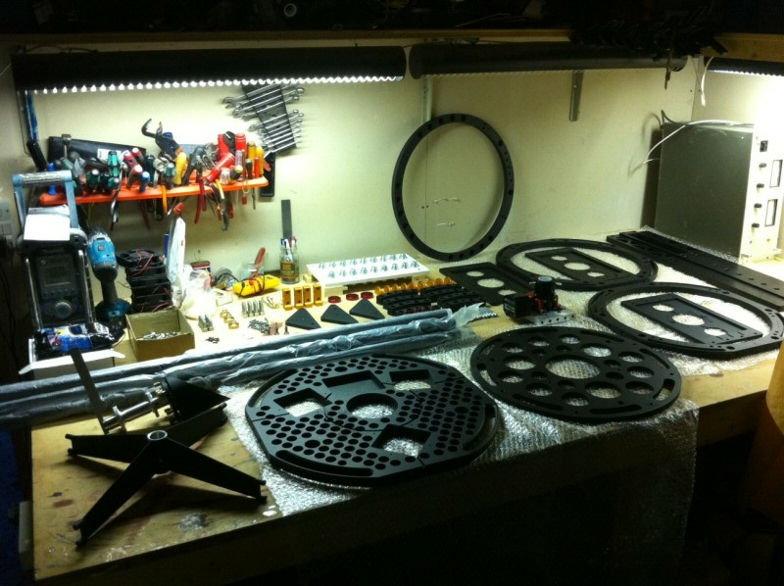
Ready to assemble the kit.
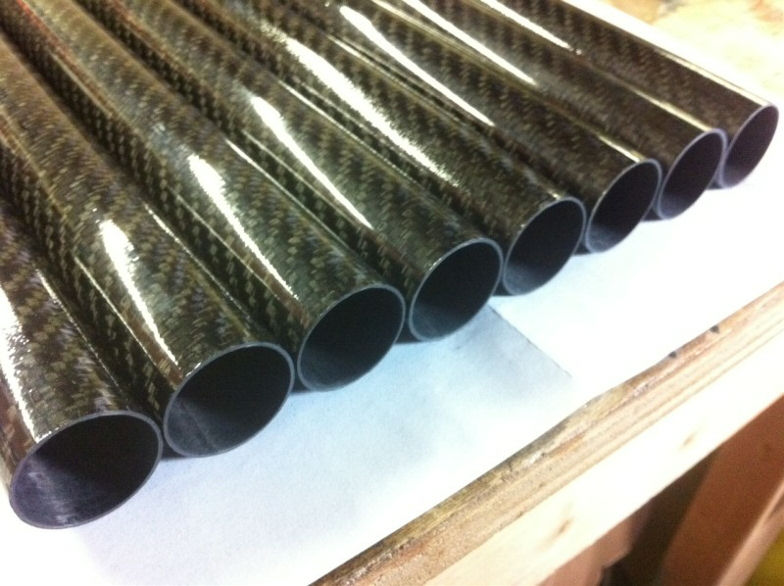
The 8 carbon truss need a little internal grinding to make the epoxy glue get a good grip.
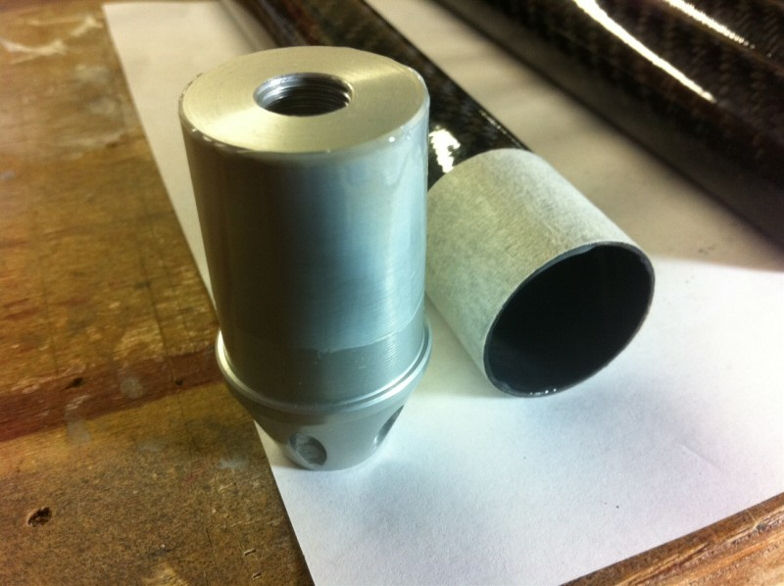
Tape protects the surface from exessive epoxy. Both the stopper and the truss are prepped with glue.
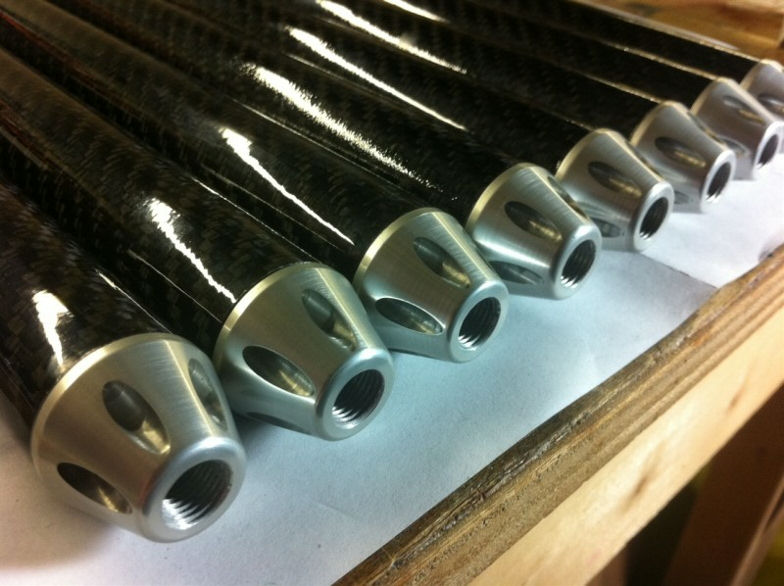
2x8 stoppers are glued and will curre within the next 24 hours.
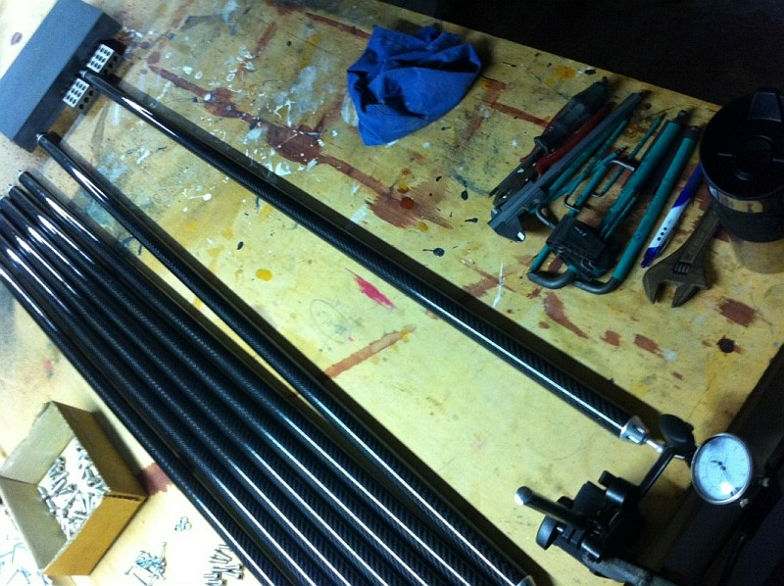
The ball screws are screwed into exact position using a dial gauge. Allthough this is not a critical parameter in a Newtonian telescope it's nice to have a OTA that is dead on symetrical.
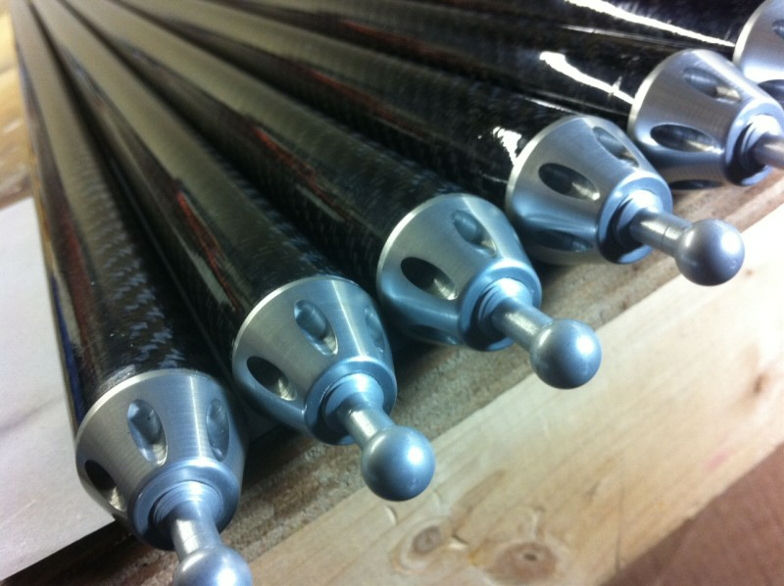
The finished truss. Now the mirror cell...
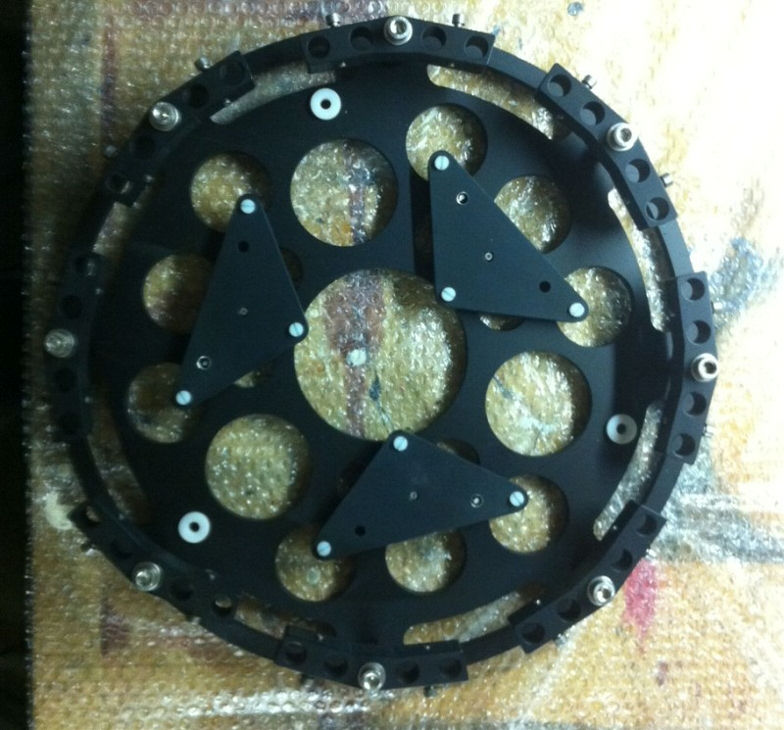
The finished mirror cell.
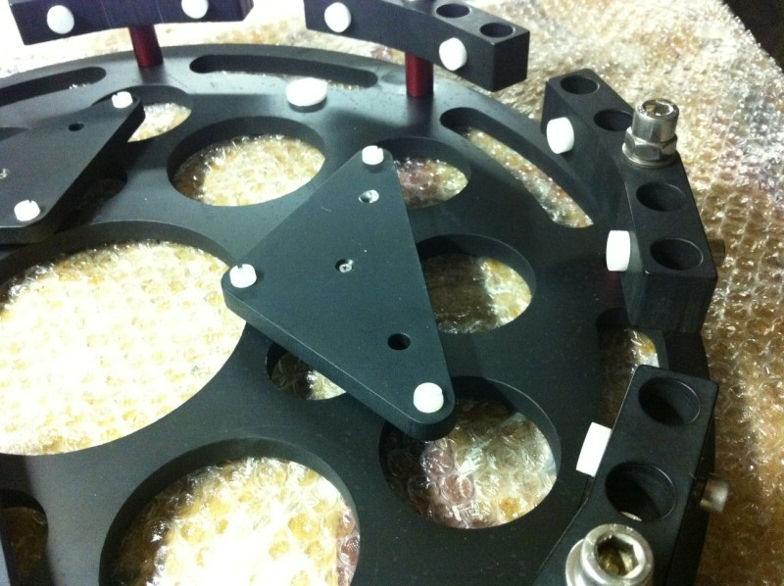
The triangles are pivoting. The mirror will rest on 3x3 nylon screws. The side support blocks can swing and evenly distribute around the side of the mirror. 16 screws with nylon pillows are tightened loosely not deforming the mirror.
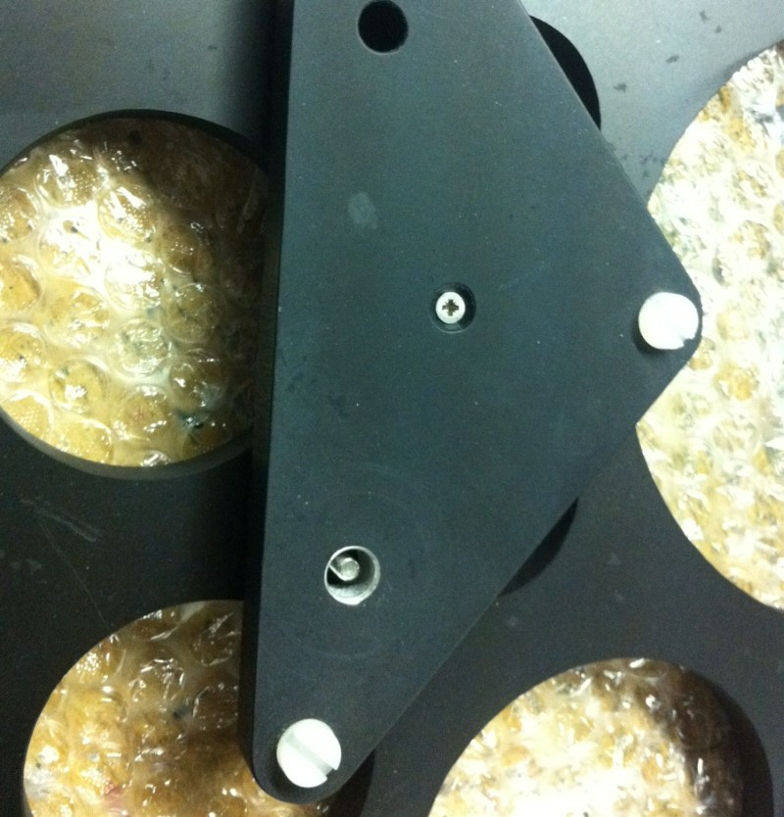
The triangles are kept in place by a split in a larger hole.
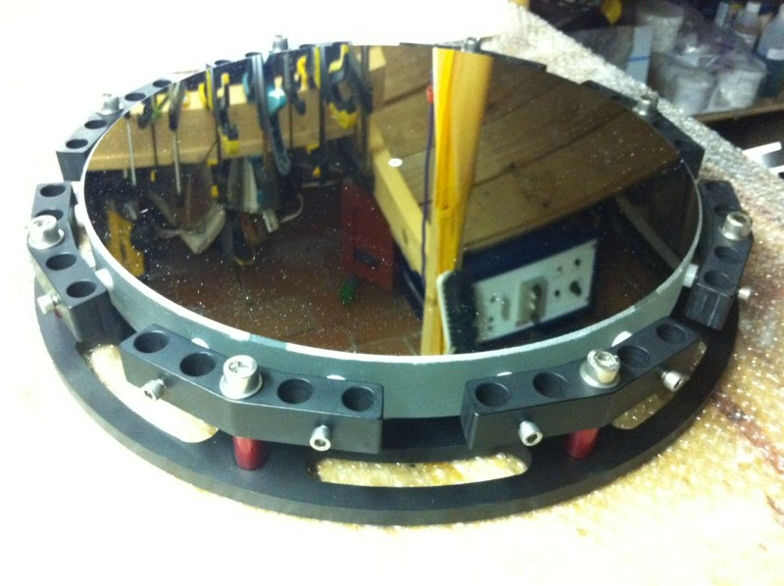
Mirror now in cell.
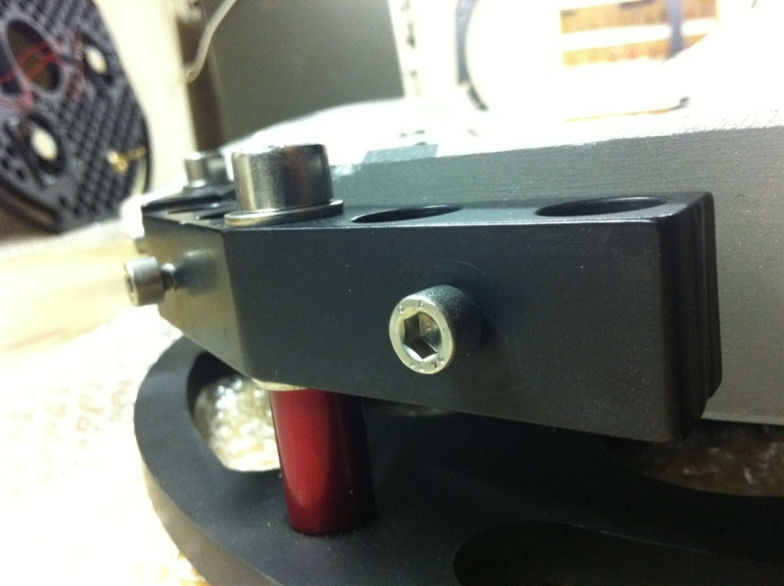
One of the eight side support blocks. The unbraco screws are finger adjusted to softly touch the mirror.
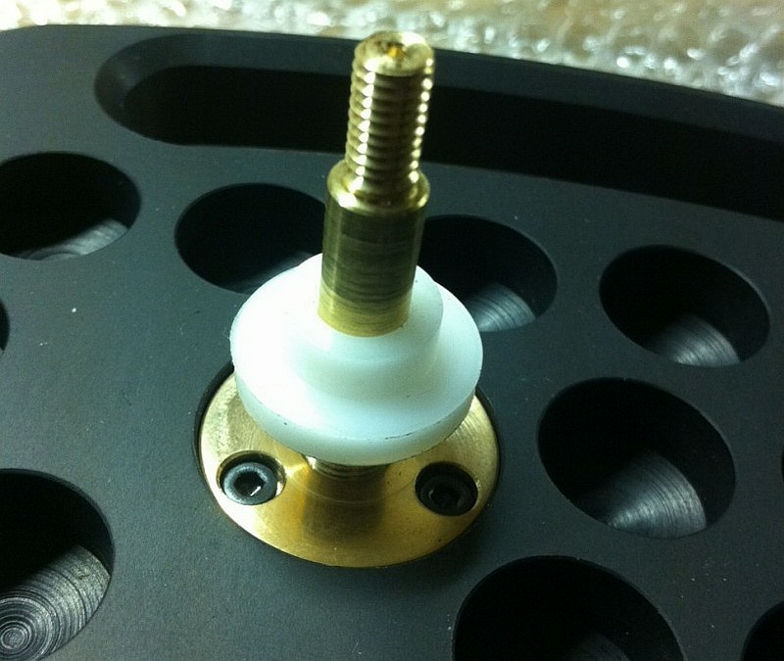
The collimation screws are put in place in the OTA back plate.
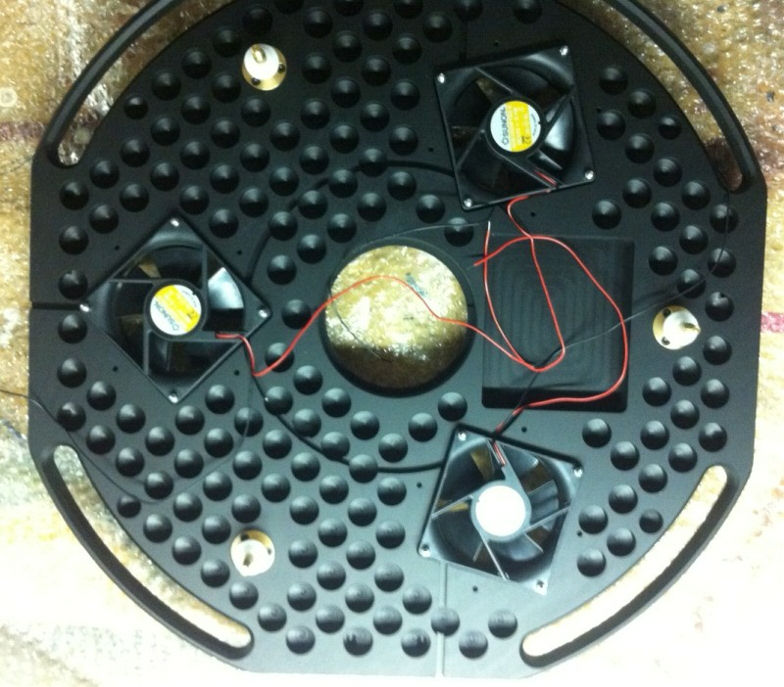
3 fans ready to be connected to the controller. The electronics is not included in this first assembly.
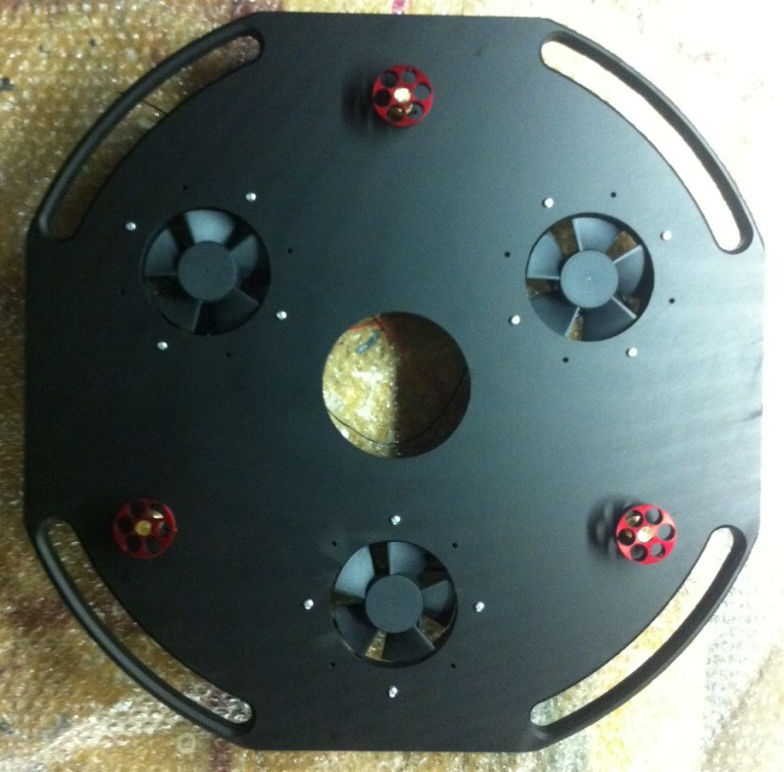
Back side of the OTA.
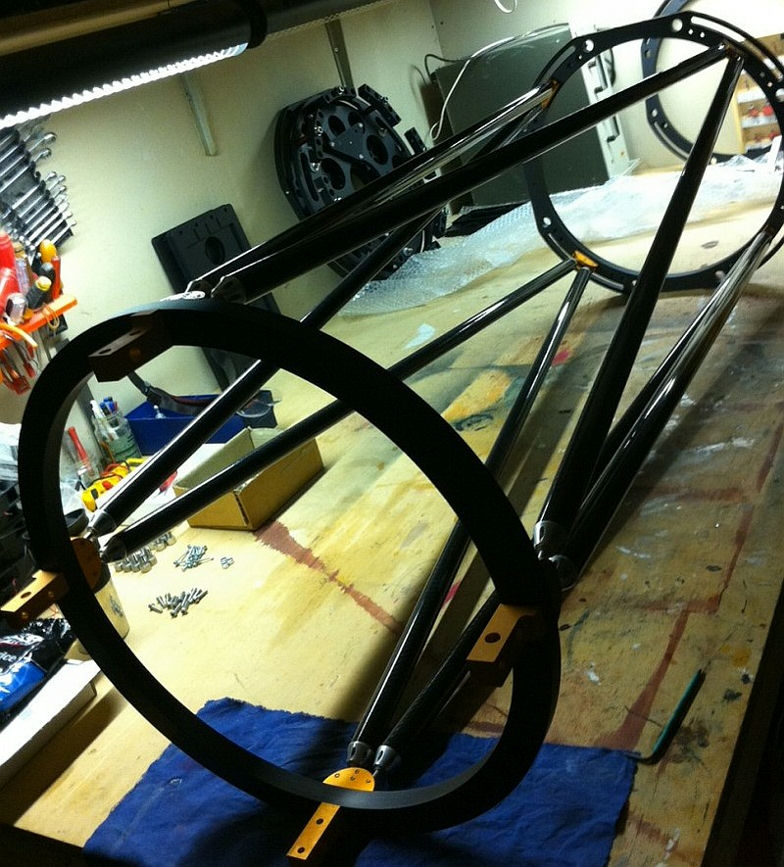
Truss section assembled.
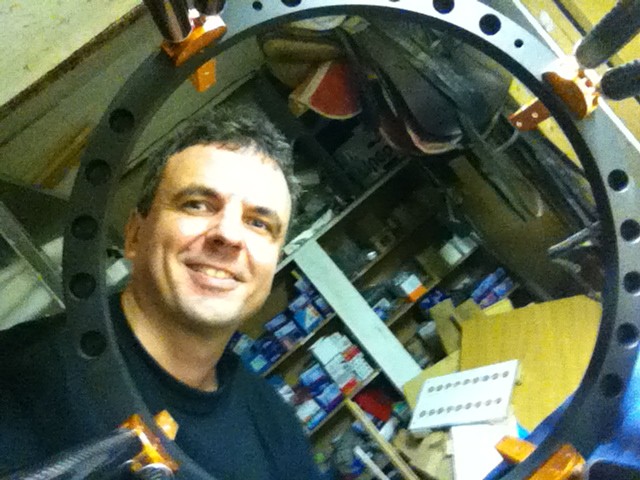
It's pretty hughe, Outher diameter is approx 20"
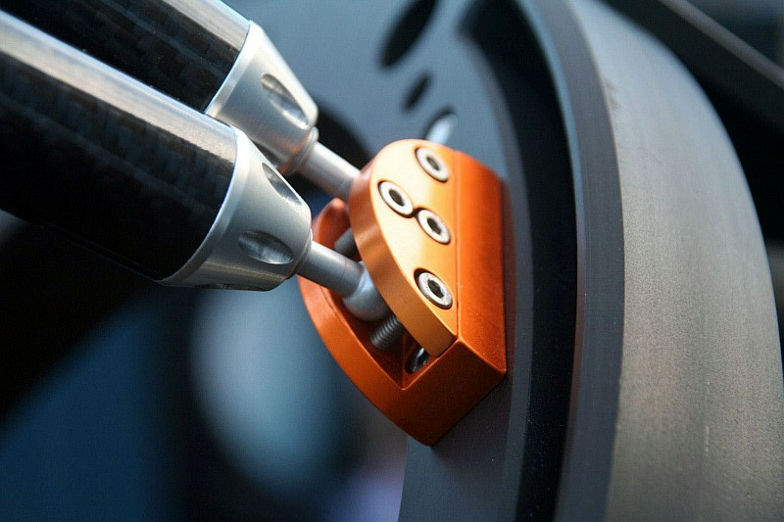
Detail picture of the truss capture block.
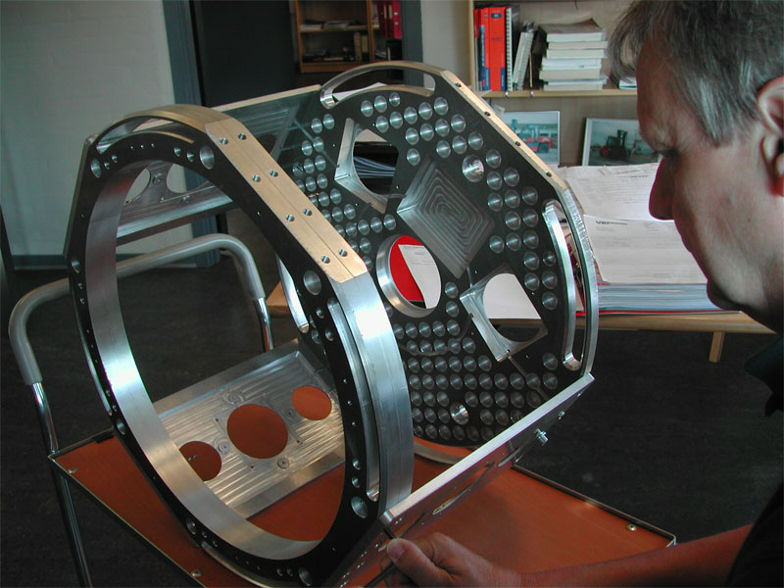
I was so exited assembling the OTA that I forgot to take pictures when assembling the lower part. This images shows the test assembly prior to anodizing.
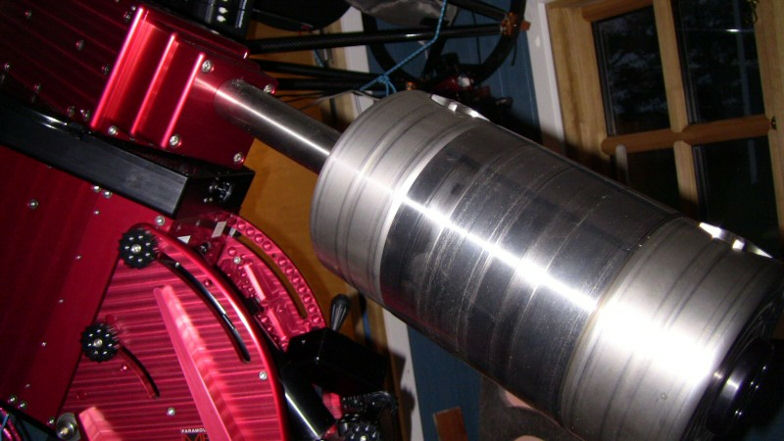
Prior to putting the OTA on the mount I needed some extra 20kg. Original counter weights are very expensive so I made 2 and but them in between the originals that keep them in place.
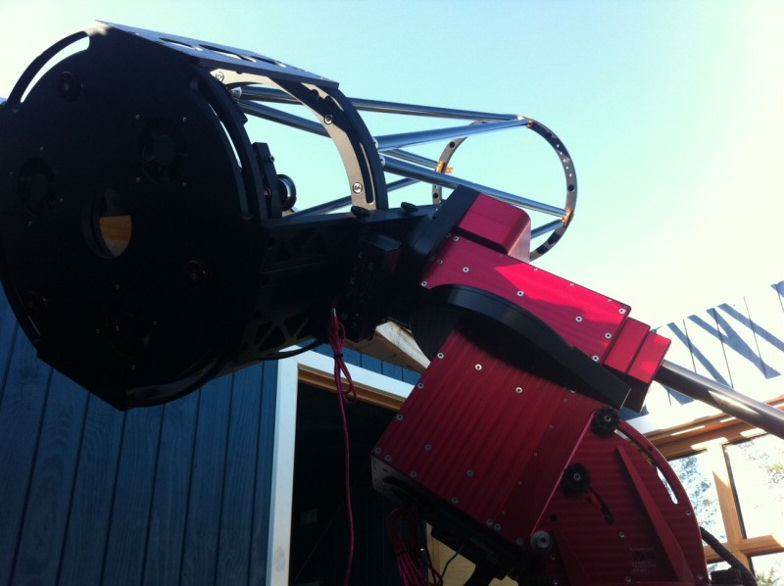
Test mount without optics. Looks great but it's toot big to my observatory :-(

The spider is now in place.

DMK21 camera attached.

Ready for first test!
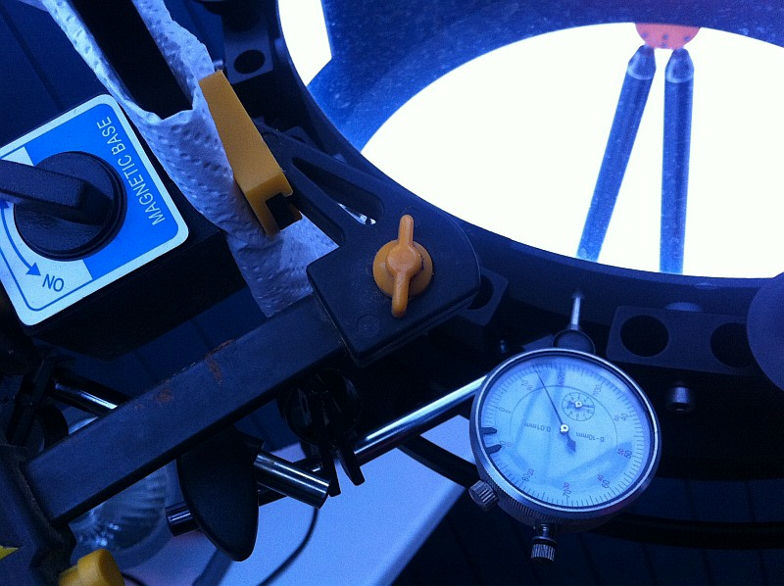
A dial gauge test of the mirror displacement when moving from horizon to horizin showed 0.4mm movement that is within acceptable range but can be improved.

The extensive cabling and electronics have to wait until the optics have been collimated and examined.
Also the protective nylon "coat" has to be sewed and some other small corrections need to be done.
I was ready for first light